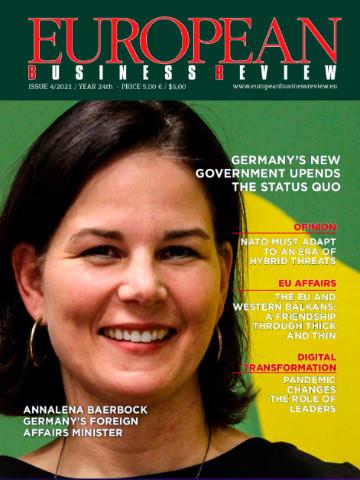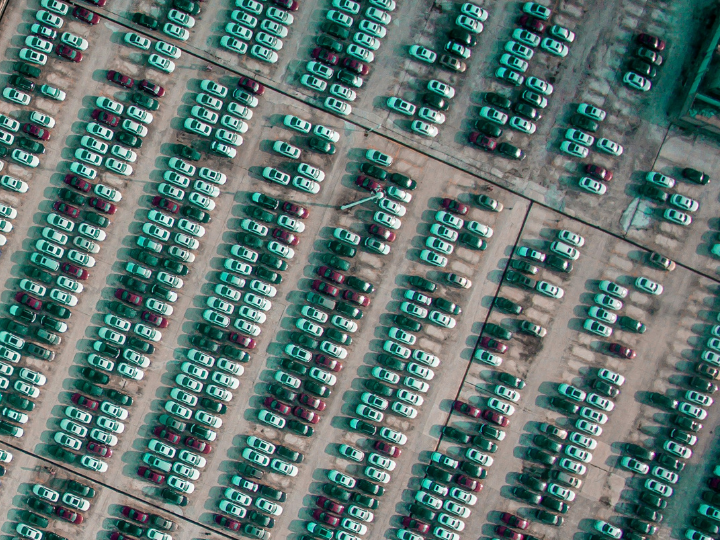by Frederic Simon
Green finance hole. If the EU’s 2030 climate goals are to be met, an annual investment gap of €406 billion must be filled, according to new research published on Wednesday (21 February).
This is the main finding of the first-ever “European Climate Investment Deficit report” by the Institute for Climate Economics (I4CE), a think-tank chaired by Jean Pisani-Ferry, a former chief advisor to the French government.
According to the research, at least €813 billion is needed annually across 22 sectors of the economy in order to meet the EU’s 2030 decarbonisation target.
“As real-economy investments reached €407 billion in 2022, this leaves a European climate investment deficit of €406 billion per year, or 2.6% GDP,” the report states, adding that investments “must still double for the EU to hit 2030 climate targets”. Frederic Simon has the details.
The trillion-euro question. The European Commission itself acknowledges that huge investments will be necessary to meet the EU’s climate goals.
In its 2040 climate policy recommendations, presented on 6 February, the EU executive said a combined €1.5 trillion will be needed annually in 2030-2050 just to meet the EU’s decarbonisation targets in energy and transport alone.
However, it left the question of funding open, saying only that “a comprehensive investment agenda” combining public and private finance will be needed to achieve the EU’s decarbonisation objectives.
According to I4CE, closing the green investment gap will require “a comprehensive approach” involving regulations, carbon pricing policies, and “some additional EU public funding”.
Von der Leyen to the rescue? The I4CE report is being presented in Brussels today as EU institutions prepare for the next five-year mandate (2024-2029) following the June European elections.
Commission President Ursula von der Leyen threw her hat into the ring on Monday by announcing her candidacy to run for a second term at the helm of the EU executive as the lead candidate for the centre-right European People’s Party (EPP).
Von der Leyen already outlined what her green policy programme could look like in her annual State of the Union speech, delivered in September. “As we enter the next phase of the European Green Deal, one thing will never change. We will keep supporting European industry throughout this transition,” she said back then.
A key plank of von der Leyen’s programme is the “industry decarbonisation deal” outlined in the Commission’s recommendation for a 2040 climate target.
“The Green Deal now needs to become an industrial decarbonisation deal” with a focus on ramping up the EU’s “domestic manufacturing” capabilities in green technologies, the Commission said when it presented its 2040 climate plan.
Industrial deal. On Tuesday, von der Leyen confirmed those intentions when she appeared in the Belgian Port of Antwerp to meet a coalition of 73 industry leaders – in sectors ranging from steelmaking to chemicals – who presented their pleas for the next EU mandate.
The ‘Antwerp Declaration for a European Industrial Deal’, presented to von der Leyen, highlighted the “urgent need for clarity, predictability, and confidence in Europe and its industrial policy”.
The declaration urges von der Leyen to adopt an “omnibus proposal to take corrective measures on all relevant existing EU regulation” as her first initiative if she is re-appointed for a second term by EU leaders.
Other demands include cheaper energy – by eliminating regulatory charges, improving grid integration and forging “partnerships with resource-rich countries” for the supply of raw materials needed for the green transition. All in all, Europe’s industry is calling for a “new spirit of law-making”. Niko Kurmayer has the details.
First things first. But before seeking the endorsement of EU leaders, von der Leyen first needs to be nominated by the government in her own country – Germany –, which is currently ruled by an alliance of Socialists, Greens and Liberals. Nick Alipour has the story.
Backing from the same parties will also be crucial for von der Leyen to secure a majority in the European Parliament after the June EU elections. Back in 2019, von der Leyen was only confirmed by a paper-thin majority in the EU assembly, thanks to the support of the socialists and liberals.
With the EPP’s majority set to be eroded further after the EU election, this means von der Leyen will need to forge a centrist coalition to win a Parliamentary majority – and defend the European Green Deal in the face of opposition from hardline conservatives and the far-right. A tough balancing act.
“For us Greens, a very central issue will be whether Ursula von der Leyen intends to continue to stand behind the Green Deal to work on it despite the potentially increased pressure coming from a rising far right,” said Henrike Hahn, a Green MEP. Alexandra Brzozowski has more.
Super Mario to the rescue? From Thursday to Saturday, EU finance ministers will be meeting in Ghent to discuss the EU’s competitiveness and investment agenda for the next five-year mandate.
Items on the agenda include future policies of the European Investment Bank (EIB) and a working session with former European Central Bank chief Mario Draghi, who was tasked in September with preparing a report on the future of Europe’s competitiveness.
However, their room for manoeuvre is constrained by the EU’s Stability and Growth Pact, which limits public debt and deficits to 60% and 3% of GDP respectively.
EU countries agreed on a reform of spending rules earlier this month, but made only limited extra room available for green investments, under pressure from “frugal” countries like Germany who want to reinstate strict EU spending rules that were suspended during the COVID-19 pandemic and the energy crisis.
“It is important that sufficient fiscal space is preserved in Member States for investment, within the frame of medium- to long-term debt sustainability,” the Commission remarked in its 2040 climate target communication.
*first published in: Euractiv.com




 By: N. Peter Kramer
By: N. Peter Kramer

